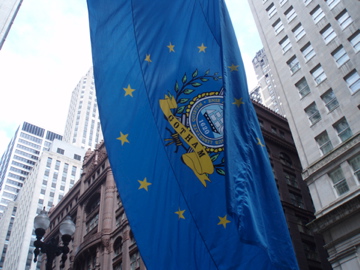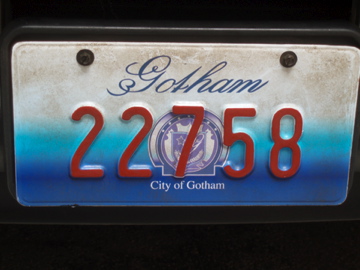August 22, 2007
By DANIEL HONIGMAN Contributor
Going green may never have looked so good as it does now. Nau, one of the newest clothing boutiques in Lincoln Park, is probably one of the most environmentally-friendly stores in a city where eco-savvy is in.
Using materials as diverse as organic cotton, PLA – polylactic acid, a biodegradable material derived from corn – and recycled soda bottles, Nau’s clothing is good both for people and the planet. And although the Portland, Oregon-based company prides itself on its outdoor apparel, much of its collection makes a bold statement in almost any setting.
The Chicago location at 2118 N. Halsted St,. which opened in April, is one of only four Nau stores nationwide. The other three are in Portland, Boulder, Colo., and Bellevue, Wash.
“Our clothing is used in four seasons, and Chicago is definitely a four-season market,” said Ian Yolles, vice-president of marketing at Nau. “Chicago also has a growing reputation as a city that cares about sustainability issues, so we thought it was a great city to expand to.”
Using fabrics as simple as organic cotton and merino wool to more scientific polyesters like PLA (polylactic acid, a corn-based derivative similar to polyester) to materials made from recycled soda bottles, Nau clothing looks and feels great.
“Nau clothing is a mixture of sustainability and style,” said Kevin Henry, coordinator of Columbia College’s Product Design program. “If you’re going to do something sustainable, you have to make it desirous. The folks at Nau are smart.”
But going green isn’t always cheap. A single pair of pants from Nau can cost almost $150, but Yolles says that while higher quality products necessitate higher prices, it all evens out in the end.
“One of the key attributes in any product when it comes to sustainable clothing is its durability, and I know this is counterintuitive, but while another product may be cheaper on its first purchase, our products are extremely durable and last a long time,” he said.
But while Henry believes that while higher costs are worth the bottom line, shoppers may need further convincing.
“There’s an implied obsolescence in fashion,” he said. “Companies say, ‘We need this garment to fall apart in two years to sell them another garment.’ You have to tell them to spend $150 and not look at it as a fashion statement, but as an investment in craft, quality and the environment, because if something is going to be thrown out in six months, it’s a waste of energy.”
In addition to higher-quality materials, if you notice the company’s use of more muted blues, greens and reds, well, that’s planned too, said Yolles.
“Before we designed a single style, we developed an extensive banned substance list, probably around 70 or so, which goes well beyond that of other apparel companies,” Yolles said. “There are seasonal color palates, but the next season they’re out of style. Even the way we’ve thought about our color palate is sustainable.”
Green from day one
In fall 2004, company brass from Patagonia and Nike sat down to plan Nau, and they ended up making one of the nation’s “greenest” companies.
“It was a rare opportunity to design, really from scratch, an entire company,” said Yolles. “Sustainability was at the forefront of our thought process from day one. Companies should have a much larger responsibility to the community than the singular pursuit of profit.”
Customers who walk into Nau are also in for a new retail experience. The shops, called “Webfronts,” blend in-store and online shopping experiences. One size of each clothing style is available to try on, and if a customer wishes to make an in-store purchase, they can. But Nau encourages customers to make transactions through Web-enabled booths and have the clothing shipped to their homes for a 10 percent discount.
Why the discount? It’s cheaper to house the clothing elsewhere, said Yolles. Stores can be smaller, making electric and heating bills cheaper. Also, because less clothing is actually in the stores, costs associated with store deliveries clothing are whittled down nearly to zero.
“If we were a traditional apparel retailer, our stores would have to be 3,400-to-4,500 square feet,” Yolles said. “Our Chicago store is 2,200 square feet, so theoretically, it’s about 40 percent more efficient than your traditional retail store, and that’s why we’re choosing to share our savings with customers.”
In addition, 5 percent of every purchase is donated to a charity of the customer’s choice in Nau’s Partner for Change program. There are 10 organizations to choose from, half of which work on social issues, half on the environment. And Windy City residents will be able to keep their money local, as six are in Chicago.
“I think Nau is fabulous,” said Jenna White, director of development at Christopher House, one of the local organizations. “We’re very thrilled to be working with Nau. It’s rare to see a corporation giving back like they do, and we’re hoping it’s a partnership that builds.”
(The story originally appeared in four Pioneer Press newspapers: Skyline, Booster and two editions of the News-Star)






